On arrival you are met and transferred to your hotel in Antananarivo for an overnight stay. 'Tana', (as the capital city is conveniently nicknamed) is a brightly coloured mélange of French colonial architecture, multi-storied houses and narrow alleys.
On your way you will see rice paddies, and a colourful patch-work of houses. Plus all the daily life in this city of about 2 million inhabitants. Tananarivians mostly live from day to day jobs. This is called “Ady Gasy”: tires repairing, selling Chinese-made products in the streets, selling scrap.
Tana must have been a beautiful city at one time. Today, the city is quite often a shock to first time visitors - throngs of people, buildings in a state of decay, street urchins, hooting and belching old French cars and the lively hustle and bustle of the street markets, all combine to make Antananarivo (Tana) a bit overwhelming at first. Once this realization sets in, Tana becomes quite a fascinating city to explore. The city sprawls over several hills with lots of narrow houses, cobblestone streets and stone staircases linking one street to another. Each street seems lined with traders and the array of merchandise on offer in the stalls.
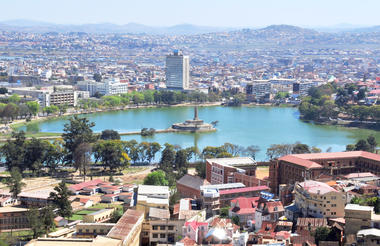
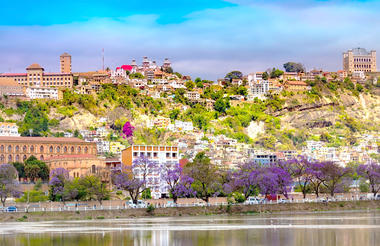
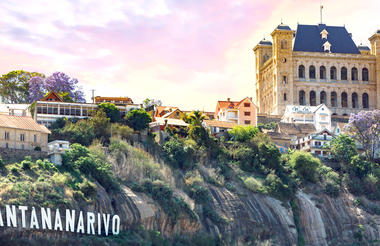
You are collected by your guide and transfer to the Eastern Rainforests and Andasibe. This scenic transfer takes approx 3½ to 4 hours on a good but winding road with picturesque scenery en route. You have the rest of the afternoon at your leisure.
Visit to the VOI reserve and also Night Walk
Andasibe National Park
The eastern rainforests of Madagascar are a must-see on any Madagascar lemur safari. The tropical montane rainforest of Madagascar is one of the densest in the world and its floral diversity is particularly rich. A big part of that attraction is the appeal of the Indri Indri lemurs which have their own special protected part of the Andasibe park.
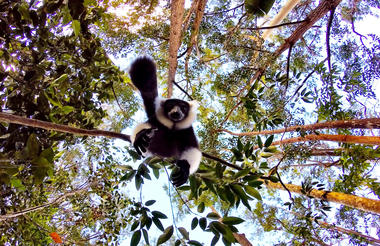

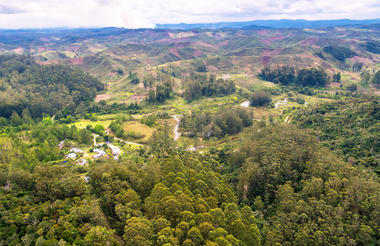
Optional night walk in forest
Today you have the whole day to explore the rainforest with the Park’s specialist guides. You set off early for a walking tour of the Mantadia National Park. Typically this is usually a morning tour of 4-5 hours but there are both longer & shorter trails on offer.
Mantadia Reserve
This is much wilder than the Indri Special Reserve and has a mix of terrain, with some steeper trails, so it’s best if you are reasonably fit. (However there are also some shorter and easier trails on offer if you prefer.)
The forest is much thicker and more pristine but you are rewarded with varied wildlife sightings such as the diademed sifaka (the so-called dancing lemur), the black-and-white ruffed lemur, common brown lemur, red-bellied lemur and the grey bamboo lemur.
Birding in Mantadia is especially good with the likes of the rare Brown mesite, Pitta-like ground-roller, Brown emutail and the velvet asity all to be seen. (Your chances of good birding increases on the longer trails.)


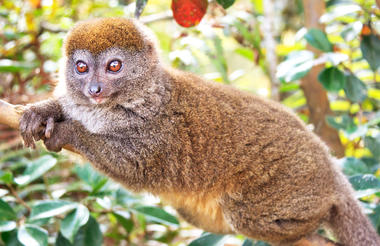
Walks in the Andasibe Park
We recommend taking the very early morning walk into the most accessible part of Andasibe National Park, the Indri Special Reserve to see the lemurs whilst they are most active. The 810 ha "reserve within a reserve" has several well-maintained forest paths, which are mostly gentle in terrain. (This is a small optional extra.)
The Indri or Perinet Special Reserve protects the largest of all the lemurs, the Indri. Standing about a metre high, with a stump for a tail, black-and-white markings and a beguilingly startled expression, the Indri looks more like a bizarre panda than a lemur. You will see them relatively easily, even if you stay on the marked trails, but for longer sightings you must scramble after them through the forest. Their long back legs are immensely powerful, and an indri can propel itself 10 metres (30 ft), executing a turn in mid-air, to grab a new tree and then gaze down benevolently at you!
Walking through the rainforest, as its distinctive siren-like calls emanate from the mist-covered canopy is one of the most memorable experiences of your Madagascar lemur safari.
Transfer to the Pangalanes Canal to Palmarium Reserve.
On the largest of the canal’s lakes is the Palmarium Reserve, a large private reserve which aims to protect both many species of indigenous palms (hence the name) as well as showcasing some of the indigenous lemurs of Madagascar from the north and eastern sides. The Palmarium Lodge is only accessible by boat along the Pangalanes Canal.
After an early lunch, you continue east to the coastal area to the town of Manabato. This is a scenic drive down the highlands of about 2½ to 3 hours. En route we’ll pass through Brickaville, a small city famous for its sugar cane plantations.
From Manabato you then enjoy a scenic one hour boat transfer across the Rasoabe Lake to the Pangalanes Canal and onto Palmarium Lodge.


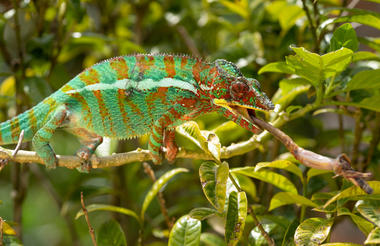
Early morning walk in Perinet Special Reserve & then transfer to Canal de Pangalanes
Ankanin’ny Nofy means “nest of the dreams”. Surrounded by a huge and blue lake, this is the ideal place for rest and commune with nature.
In the morning, you visit of the Palmarium reserve, a private natural reserve situated on a peninsula of 46 ha. Here we can admire many species of lemurs in their natural habitat as well as some which are typically found elsewhere. So it is not for the purists but it does allow you to see a great variety of lemurs which you may not see otherwise.
This is perfect for keen photographers as you see first lemurs in the natural primary forest and then in this secondary forest area where they are more habituated to human contact.
There is also an opportunity to see the extremely rare Aye Aye nocturnal lemur on a night walk in a specially created island reserve (extra cost).
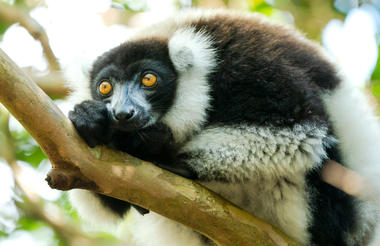
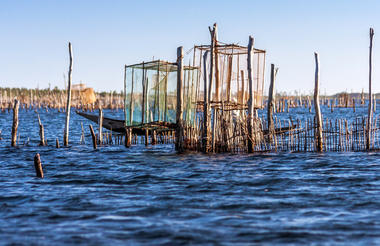

Optional Night Walk to see the Aye Aye
Today you take a longer 2 hour scenic boat transfer north along the Pangalanes canal to Tamatave (also known as Tomasina) where you meet up with your private driver again. This part of the canal has more activity. It is used by locals transporting their goods. Now you can enjoy seeing pristine wetlands vegetation, authentic fishing villages, fishermen working on their fish traps and local people travelling the canal up to Tamatave.
You continue north for approx. 1½ hours to the charming little coastal village of Mahambo. Mahambo is well shaded by coconut trees. It is famous for surfing and resort holidays, even if it remains very traditional and old fashioned.



Boat ride to Tamatave & then road transfer up the East Coast to Mahambo
This morning you set off early to drive north on the scenic coastal road to the ferry point for Ile Sainte Marie. The ferry takes between 1¼ and 1¾ hours depending on the conditions. On arrival you are met and transferred to your hotel.
Ile Sainte Marie - Ile Sainte Marie, off the east coast of Madagascar is the ideal spot for some time on the beach after you’ve explored some of its wildlife reserves. It is also well-known for its diving and whale-watching in season (July to October).
Ile Sainte Marie boasts scenery to rival the Seychelles: lovely bays protected by soft coral reefs, quiet white sandy beaches, and verdant green vegetation created by its tropical climate.
Choice of Hotels
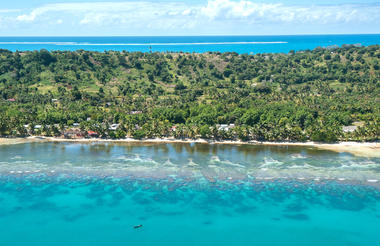


At leisure to enjoy the delights of the island and its beaches.



Today you are transferred to the airport in time for your flight to Tana. Transfer to your hotel.
Note: Nearly always you have to have a final night in Tana as the flight from Ile Sainte Marie is in the early afternoon. But this can change to the late afternoon if the schedule changes (which it often does!) if this night is NOT needed, we will deduct it from the cost.
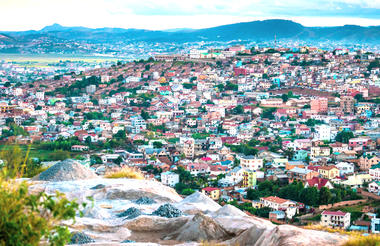
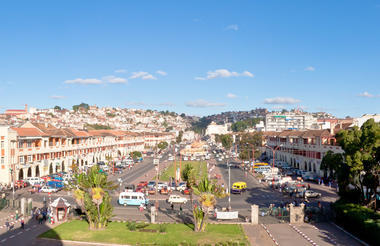
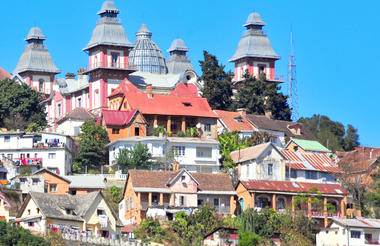
This morning you have some time at leisure. Later you are transferred to the airport in time for your flight to Tana.
Optional city tour if you wish (at extra cost).
Optional Antananarivo city tour





